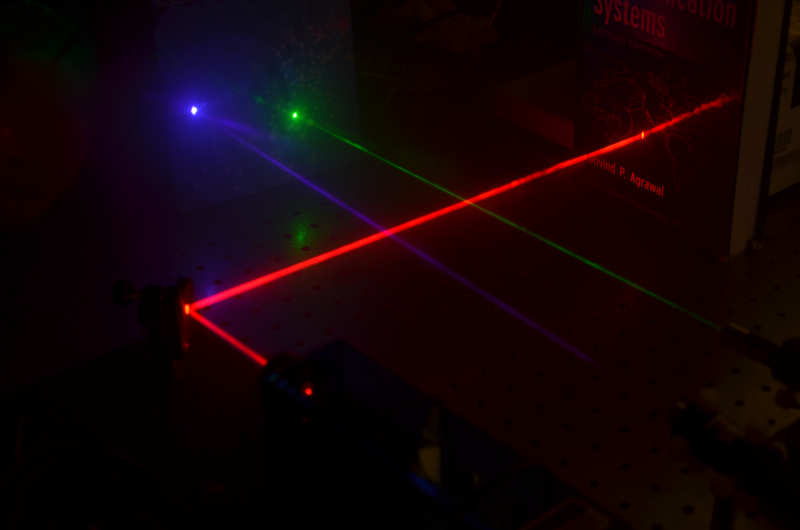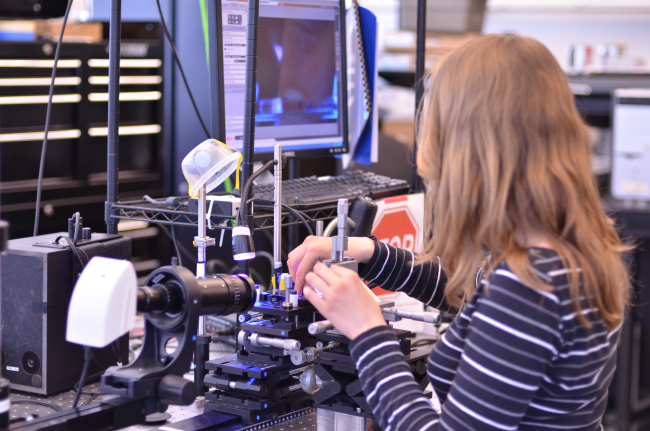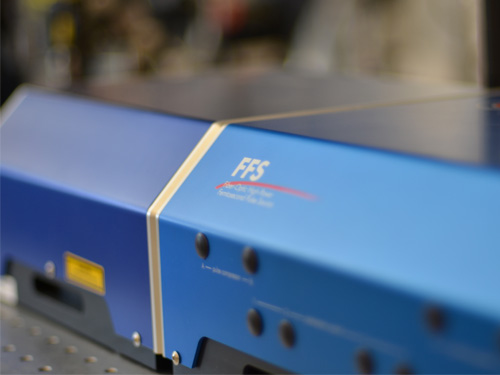Visible/IR Free-Space Optical (FSO) Communication
Over the past few decades, optical technologies have evolved with motivations based upon fibre optic trasmission media. The high-speed benefits of optical transmission and reception have allowed for terabit/sec data rates, although the unidirectional nature of optical fibres have inherent limitations for communication systems desiring omnidirectional optical wireless links. Free-space optical (FSO) systems have solved this problem by allowing an optical link, employing visible or infrared (IR) light, to be established by multiple optical transceivers. This enables bi-directional optical links capable of encoding signals for data transmission and positioning via modulation.
The IOL develops state-of-the-art all-optical and electro-optic modulators for the free-space environment. These high-speed devices employ retroreflection—i.e., a portion of incident light is reflected back to its respective source transceiver—to leverage a high field-of-view for appreciable modulation depths. Furthermore, these devices can be effectively implemented in omnidirectional optical wireless terrestrial communication networks or FSO ground-to-satellite /deep-space links. Efforts are currently underway to implement the aforementioned modulators in these terrestrial links (for optical wireless communication and positioning applications) and FSO ground-to-satellite links (for satellite communication and space exploration applications).





